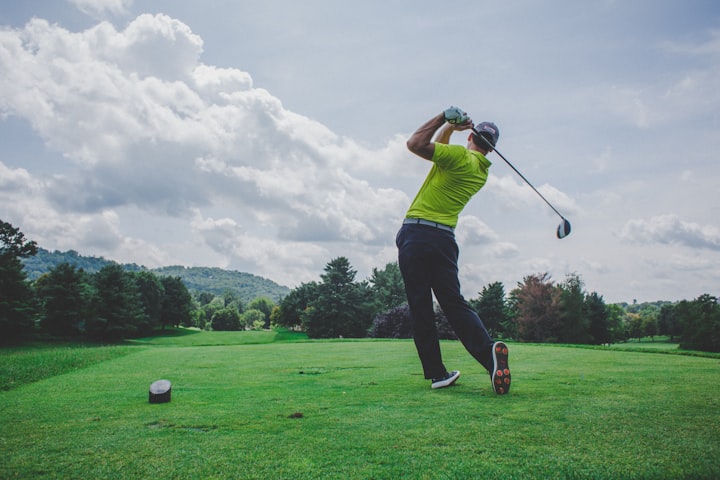Seven sports in the "back check"
Sport and exercise keep you healthy. That is true in general, but not entirely. For the back, for example, not all sports are equally beneficial

Back problems are a common ailment. A Sedentary lifestyle is one of the risk factors for this. Accordingly, sport helps to prevent symptoms or at least alleviate them - but not all disciplines and not every way of doing them are equally good for the back.
Of course, the individual physical requirements play a role. Whether there are problems or not depends "on genetics and long-term behavior," says neurosurgeon Munther Sabarini from the Avicenna Clinic in Berlin.
Therefore, one should not advise recreational athletes against a certain sport, says the orthopedic surgeon and sports medicine specialist Axel Klein from Dresden. Instead, one should ask: “How do you do it, how intensively do you do it?” Recommends the Vice President of the German Society for Sports Medicine and Prevention (DGSP).
Nevertheless, there are differences between the sporting activities. And sometimes the way you do it is crucial. Here are seven sports in the "back check" ride
If you want to do your back good, you should sit on a horse. The upright posture while riding strengthens the back muscles and provides relief. That is why there is also therapeutic riding for children, for example, says Klein.
Because you have to constantly compensate for the horse's movements, the small muscles in the spine are trained that can hardly be reached during normal strength training, says Munther Sabarini. In addition, studies have shown "that the intervertebral discs are also stressed when riding and thus kept fit". This sport promotes mobility and is considered "an almost ideal training for a healthy back".
Swim
Swimming also has a good reputation in this regard - if you do it right. When swimming in the breaststroke, you shouldn't keep your head rigid over the water, but plunge straight in to avoid neck pain , explains Axel Klein.
Office workers or people who spend a lot of time in the car could also have problems with the sacrum-iliac joint in the pelvis when swimming the breaststroke. Reason: The "splaying movement" (small) of the legs increases the stress on the joint. This increases the pain if there is already irritation at this point from sitting for a long time.
The frequently recommended backstroke is only good if both the upper body and the legs are straight in the water, says Klein. In many people, however, they would hang down, which indicates a lack of trunk stability. That could cause complaints.
Munther Sabarini mentions an always positive effect of swimming: the buoyancy in the water relieves the stress on the spine and muscles and is gentle on the joints. Therefore, it is also suitable for overweight people.
Football
In ball sports - including soccer - joints and muscles are heavily stressed by dynamic changes of direction, abrupt braking, or tough duels, as Sabatini explains. Head balls put a strain on the cervical spine. According to the expert, football is therefore not necessarily recommended for people with previous damage to the spine. At least you should then strengthen your back muscles through targeted training.
Axel Klein sees it more positively: In contrast to tennis, for example, you have "permanent changes of posture" in football, which is good in itself. If the spine is healthy, "it shouldn't be a problem".
Back problems often arise from a deficit in hip rotation, says Klein. If you can't make the many turning movements in soccer “from your hips, then the movement ends up at the transition between the lumbar spine and sacrum and leads to a compensatory load there.” And consequently to complaints.
Tennis
Klein finds the sport with the small felt ball "rather unfriendly to the back". This is due to the quick stopping movements and the strong overstretching backward, especially when serving. This puts a lot of strain on the small vertebral joints. Another problem is the one-sided heavy load on the side of the striking arm, which also leads to an imbalance in the back.
For tennis players, it is important to have “core stability”, i.e. strong core muscles that should be strengthened through additional training. J jog
Of the various running disciplines, jogging puts the greatest strain on the spine and joints, says Munther Sabatini. Because depending on the running pace, three to five times your body weight act on you when you put your foot down. Recreational athletes should therefore be better off on soft floors - or switch to Nordic walking if they are in pain, which is also gentle on the feet and hips.
According to Axel Klein, runners have no more signs of wear on their backs than non-runners. However, if there is already previous damage, he advises not to run downhill, to avoid hard surfaces such as asphalt, and to reduce the intensity. He also advises doing one unit after three running units to strengthen the core and leg muscles.
To go biking
Here the how plays a decisive role. "In sports that have so many variations, it's difficult to say: that's good, that's not good," says Klein.
If you sit upright on a Holland bike and ride comfortably on level ground, you protect your back, according to the expert. But there is also the racing cyclist “who rides with a saddle ten centimeters high - his back bent forward for five hours. He may hardly be able to get up afterwards because he has massive back problems. "
The height of the frame, handlebars, and saddle must match the body size, recalls Munther Sabatini. And since the back muscles are little trained when cycling, he recommends supplementary exercises.
To dance
As with horse riding, the experts agree. Dancing is practically always recommended. An upright posture, high mobility, and a lot of coordination with little impact from the feet: Dancing is healthy and trains body awareness.
Spine specialist Sabarini says: If you already suffer from back problems, “dancing is a good way to stay active despite the symptoms”.
Conclusion
There are differences between the sports. Dancing, for example, is more back-friendly than tennis. However, you can alleviate or prevent the complaints that a sport may cause in the lower back through targeted training - for example, to strengthen muscles.
For orthopedist Axel Klein, strength training is about promoting mobility. "You can only train the muscle well if it is flexible," he says.
However, Klein finds "regularity of movement" even more important than special training - not only in sport but also in everyday life. Movement is usually better than rest, especially with back problems, whether you play football or prefer to swim.
About the Creator
Sarmad Mayo
If you are looking for a New side Hustle, Selling Feet Pictures is a lucrative venture for you to start Today.
Sell Feet Pictures on FunwithFeet






Comments
There are no comments for this story
Be the first to respond and start the conversation.